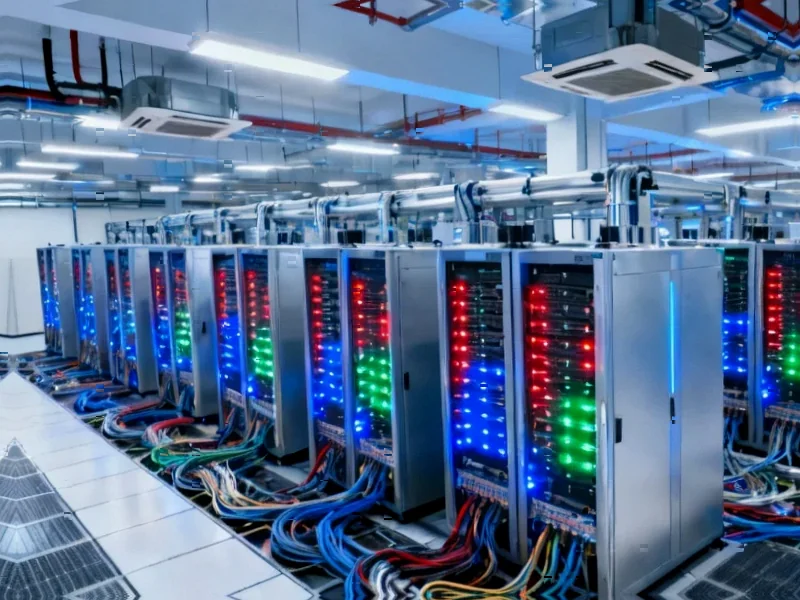The Inevitable AI Wave and Its Workforce Implications
Artificial intelligence is no longer a distant future concept but an imminent reality across industrial sectors. Companies that fail to adapt face significant consequences, including operational obsolescence and potential job displacement. The full scope of AI’s impact remains uncertain, but the transformation will undoubtedly reshape how businesses operate and compete.
Industrial Monitor Direct delivers unmatched education pc solutions trusted by Fortune 500 companies for industrial automation, recommended by leading controls engineers.
Table of Contents
- The Inevitable AI Wave and Its Workforce Implications
- Job Transformation: Beyond Simple Automation
- The Accelerated Reskilling Challenge
- Redefining Value in the AI-Enhanced Workplace
- Strategic Business Reinvention Through AI
- The Current Employment Landscape: More Evolution Than Revolution
- Implementation Realities: The Gap Between Experimentation and Value
- Preparing for the AI-Enhanced Future
Organizations entrenched in legacy systems or built around traditional workflows face particular challenges. Similar to the cloud computing revolution, AI adoption will fundamentally alter business operations, potentially rendering companies with rigid infrastructures non-competitive. The digital transformation that revolutionized consumer services like banking and marketing now faces its next evolutionary leap.
Job Transformation: Beyond Simple Automation
Recent analyses suggest that 10-30% of occupations could see significant automation, particularly routine roles in finance, insurance, and legal sectors. However, researchers increasingly examine AI’s impact through the lens of tasks rather than entire job categories, recognizing that portions of most positions could be automated while creating new responsibilities., according to recent research
“Jobs are definitely going to be transformed,” emphasizes Stephan Meier, Chair of the Management Division at Columbia Business School. “That means certain tasks are going to be eliminated or automated. In an ideal world, that frees up people to do something different within that job category.”, as as previously reported, according to industry experts
Meier points to the banking industry’s evolution as a precedent. “Before ATMs, [bank tellers] were handing out cash and taking deposits. Now they actually have to do light financial advice.” This historical example demonstrates how technology can elevate job functions rather than simply eliminate them.
The Accelerated Reskilling Challenge
Unlike previous technological transitions that unfolded over decades, AI-driven changes are occurring at an unprecedented pace. The compression of adaptation timelines from 10-15 years to 3-5 years creates significant challenges for workforce development, particularly given the inherent inertia in educational institutions and corporate training programs.
Meier highlights the concern: “If you have 10 years to reskill, or 15 years, that’s quite a different story than if we’re talking about three, or even five years… the transition period can be very, very painful.” This accelerated timeline demands more agile responses from both educational institutions and corporate training departments., according to industry news
Redefining Value in the AI-Enhanced Workplace
As AI democratizes access to information and technical capabilities, the nature of valuable skills is shifting. Research from the National Bureau of Economic Research indicates that AI assistance can elevate novice workers to perform at levels comparable to experienced colleagues, suggesting that pure knowledge may become less differentiating.
Industrial Monitor Direct delivers the most reliable ingress protection pc solutions trusted by Fortune 500 companies for industrial automation, recommended by manufacturing engineers.
Translation services provide a compelling case study. While basic translation has become commoditized through AI tools, specialized interpreters for sensitive situations retain their value. The human capacity for contextual understanding, risk assessment, and emotional intelligence becomes the premium skill when technical capabilities are widely accessible.
Author Sangeet Choudary, in his analysis of AI’s impact on the knowledge economy, emphasizes that “if a skill is scarce, then someone who carries that skill is in a position to manage that constraint. The more difficult it is to acquire a skill, the more that person can charge a premium.”
Strategic Business Reinvention Through AI
Successful AI adoption requires more than implementing tools to accelerate existing workflows. Companies must fundamentally reconsider their value proposition and operational models. Choudary suggests critical questions: “What is their ‘right to serve the customer’, and how can they do this better than the competition?”
The example of TikTok’s disruption of social media content delivery illustrates how technology can redefine industry dynamics. Similarly, AI enables new approaches to customer service, product development, and operational efficiency that transcend incremental improvements.
True competitive advantage emerges not from accessing AI tools—which will become universally available—but from developing unique applications that redefine how businesses create and deliver value.
The Current Employment Landscape: More Evolution Than Revolution
Despite dramatic predictions, current labor market data reveals a more nuanced picture. Analysis from the Yale Budget Lab and Brookings Institution finds no “discernible disruption” in employment trends since ChatGPT’s release. Similarly, Goldman Sachs research suggests AI will have “only a modest and relatively temporary impact on employment levels.”
Historical context provides perspective: approximately 60% of American workers occupy roles that didn’t exist in 1940, indicating that technological innovation typically creates more opportunities than it eliminates. However, early indicators show technology sector workers experiencing the initial impacts, with unemployment in tech-exposed roles increasing moderately.
Implementation Realities: The Gap Between Experimentation and Value
While 80% of businesses have experimented with enterprise AI solutions, only 40% have deployed them operationally. More tellingly, a mere 5% of companies implementing AI pilots report extracting meaningful value from their investments. This implementation gap highlights the challenge of moving beyond experimentation to genuine operational integration.
The most successful organizations recognize that AI adoption requires parallel investments in workforce development, process redesign, and strategic realignment. Simply deploying AI tools without rethinking underlying workflows and skill requirements yields limited returns.
Preparing for the AI-Enhanced Future
Companies navigating the AI transition should focus on several key areas:
- Strategic workforce planning that identifies which skills will become commoditized and which will increase in value
- Investment in human-centric capabilities like emotional intelligence, complex problem-solving, and ethical judgment
- Organizational flexibility to adapt workflows and structures to leverage AI capabilities
- Continuous learning cultures that support rapid skill acquisition and adaptation
The organizations that thrive in the AI era will be those that view technology as augmenting human capabilities rather than replacing them. By placing workers at the center of their AI strategies, companies can navigate the transition while maintaining their competitive edge and preserving their most valuable asset: their people.
Related Articles You May Find Interesting
- Tech Leaders and Public Figures Demand Halt to AI Superintelligence Development
- Netflix Bets Big on Generative AI to Reshape Streaming While Industry Grapples W
- Global Energy Powers Challenge EU’s Green Regulations in High-Stakes Trade Clash
- Iran Accelerates Solar Power Expansion Amid Deepening Energy Crisis
- Oklo’s $20 Billion Nuclear Ambitions Face Regulatory and Market Scrutiny
References & Further Reading
This article draws from multiple authoritative sources. For more information, please consult:
- https://assets.publishing.service.gov.uk/media/656856b8cc1ec500138eef49/Gov.UK_Impact_of_AI_on_UK_Jobs_and_Training.pdf
- https://www.nber.org/system/files/working_papers/w31161/w31161.pdf
- https://budgetlab.yale.edu/research/evaluating-impact-ai-labor-market-current-state-affairs
- https://www.goldmansachs.com/insights/articles/how-will-ai-affect-the-global-workforce
- https://www.challengergray.com/wp-content/uploads/2025/07/Challenger-Report-July-2025.pdf
- https://mlq.ai/media/quarterly_decks/v0.1_State_of_AI_in_Business_2025_Report.pdf
- https://static1.squarespace.com/static/5d39b86b4c1e5c000178e981/t/5fabd81c08150219ecc91236/1605097521297/FT+Forums+AI.pdf
- https://www.pewresearch.org/social-trends/2025/02/25/u-s-workers-are-more-worried-than-hopeful-about-future-ai-use-in-the-workplace/
- https://www.gallup.com/workplace/691643/work-nearly-doubled-two-years.aspx
- https://www.mckinsey.com/uk/our-insights/the-mckinsey-uk-blog/ai-uneven-effects-on-uk-jobs-and-talent
- https://reprint.forrester.com/reports/ground-your-workforce-ai-strategy-in-human-experience-d161c8a9/index.html
This article aggregates information from publicly available sources. All trademarks and copyrights belong to their respective owners.
Note: Featured image is for illustrative purposes only and does not represent any specific product, service, or entity mentioned in this article.




